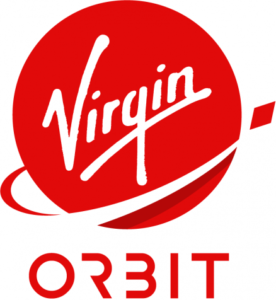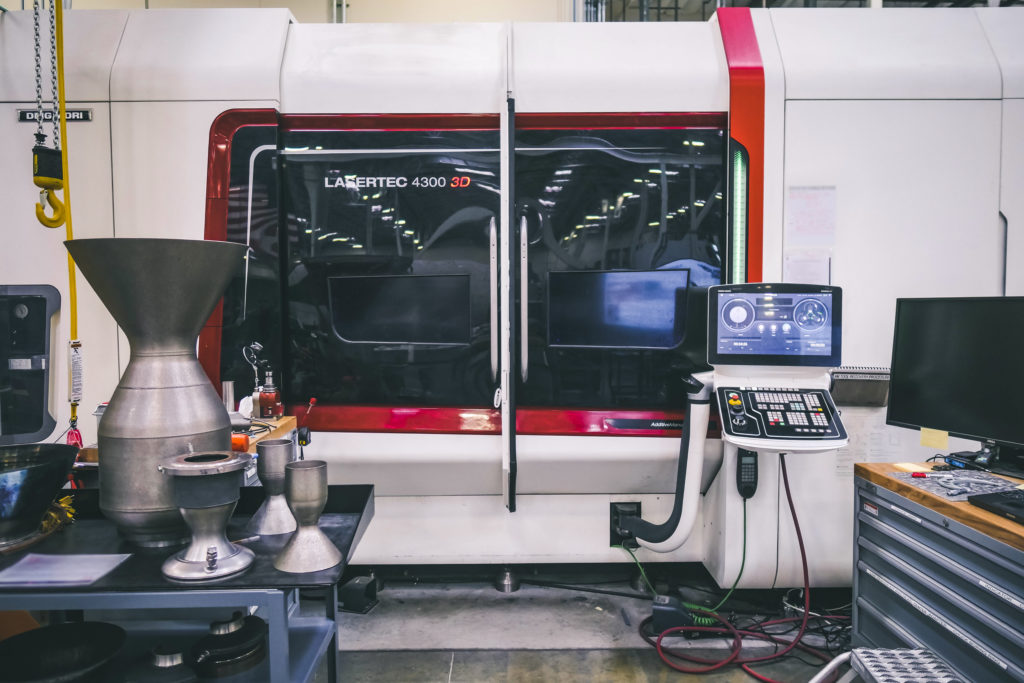To date, a total of 565 people have gone to space. But that could change very soon as long-awaited commercial spaceflights might be launching next year. After years of delay, Virgin Galactic has recently announced that 2020 could finally be the year anyone (that is, anyone who can pay the $250,000 ticket) will be able to view the Earth from space. That’s basically what Richard Branson, philanthropist, space enthusiast and founder of the Virgin conglomerate, really wants: a chance for non-astronauts to visit the outer limits of our planet.
Back in 2016, Branson expressed his desire for “millions and millions of people out there who would love to become astronauts” to have a chance to travel to orbit.
“If we can make it environmentally friendly, if we can make it affordable and if we can make it safe, then in time your children and my grandchildren will all have the chance to go to space.”
Actually, he plans to be part of the crew on the first Virgin Galactic spacecraft launching next year; he even has the new space gear to travel, thanks to a recent partnership with Under Armour.
But Branson’s vision of moving his branding into space also involves the creation of a launch service for small satellites, which is why in 2017, the entrepreneur decided to form Virgin Orbit as a stand-alone firm spinning out of Virgin Galactic. The company will focus on the small satellite business, also called “smallsats”, nanosats or CubeSats, which is expected to reach $15.69 billion globally by 2026. Not a bad bet, considering they are forecasted to be a game-changer in the commercialization of space. Unlike Virgin Galactic, which is looking to transport people to space, Virgin Orbit will most likely move quicker, and even though their business plan revolves around launching small- to medium-sized satellites into low Earth orbit (LEO) with a rocket, they have plans to go even farther.
 Although Virgin Orbit hasn’t officially revealed the pricing for interplanetary missions, they have already signed contracts with interested parties, from government agencies and established space players to Silicon Valley start-ups and university spin-offs, with projects that go from monitoring climate change to bringing the internet to underserved communities. We learned through a Virgin Orbit lawsuit for canceled contracts against OneWeb, one of the companies that had purchased 39 launches, that the price tag for each mission is $6 million. Companies that want to take satellite constellations to space are still booking reservations for the next years, there are even announcements of a small spacecraft going to Mars as soon as 2022 after Virgin Orbit partnered with Polish satellite manufacturer SatRevolution and nearly a dozen Polish universities to design up to three robotic missions to the Red Planet over the next decade.
Although Virgin Orbit hasn’t officially revealed the pricing for interplanetary missions, they have already signed contracts with interested parties, from government agencies and established space players to Silicon Valley start-ups and university spin-offs, with projects that go from monitoring climate change to bringing the internet to underserved communities. We learned through a Virgin Orbit lawsuit for canceled contracts against OneWeb, one of the companies that had purchased 39 launches, that the price tag for each mission is $6 million. Companies that want to take satellite constellations to space are still booking reservations for the next years, there are even announcements of a small spacecraft going to Mars as soon as 2022 after Virgin Orbit partnered with Polish satellite manufacturer SatRevolution and nearly a dozen Polish universities to design up to three robotic missions to the Red Planet over the next decade.
To do the job, the company has been developing and testing its LauncherOne smallsat rocket, an air launch to orbit rocket, designed to take smallsat payloads of 300 kilograms (660 lb) and more into orbit, following air launch from a carrier aircraft at high altitude. Last July, they run a drop test meant to see if the rocket system behaved as expected, by dropping it from an airplane over Southern California where it slammed into the ground. They still need to go for a test run and after the team is satisfied with the rocket’s performance they will start sending commercial missions to orbit.
Branson, a firm believer in the benefits of cutting-edge technology, used 3D printing to help the space brand built rocket engine parts. Last May, NASA centers partnered with Virgin Orbit to develop and test a uniquely manufactured rocket part. Experts in combustion and additive manufacturing created a 3D printed combustion chamber that combines multiple materials and takes advantage of cutting-edge manufacturing processes.
At the time Kevin Zagorski, Propulsion Advanced Manufacturing manager at Virgin Orbit, said “the combination of multiple optimized materials and additive manufacturing technologies we’ve employed represents a significant advancement from the compromises typically made in the production of 3D printed rocket engine combustion chambers. The information gained from our partnership with NASA will be key in applying these technologies to further improve cost, performance and lead time of Virgin Orbit’s propulsion systems for the LauncherOne vehicle.”
The company stated that its joint goal was to study the use of additive manufacturing to build multimetallic combustion chambers and that this technology will change the way humankind designs and builds rockets altogether. It seems combustion chambers are not only a crucial component of all rocket engines, but the harsh operating environment makes them one of the most difficult engine parts to develop while keeping manufacturing time short and costs low. It’s the place where the propellants mix and ignite, generating incredibly high pressure and temperature before accelerating past the speed of sound as they exit the nozzle.
Early on, Virgin realized that if they were going to take the leap into space, they also needed to keep up with advances in technology, otherwise they would not have the same liberties to develop what they wanted. It’s all part of the Branson way of doing business: “You don’t learn to walk by following rules, you learn by doing, and by falling over.” And that is exactly what 3D printing is offering to the booming aerospace industry: the means to create whatever the mind can imagine and the machines can make, sustainably and cost-effective.
To keep up with this desire to innovate, Virgin Orbit was the first customer in the US to implement DMG MORI’s hybrid AM machine and use it to 3D print rocket engine parts for space launch. The LASERTEC 4300 3D hybrid is turning out large parts in the company’s Long Beach, California, facility. The machine even allows new material combinations, like Copper and Inconel; as well as a very large working room for workpieces of up to 3,306 pounds.
The professional 3D printer has integrated laser additive manufacturing into a fully-fledged five-axis mill-turn machine, and prints up to 10 pounds per hour. The aim of the team has been to use it for manufacturing major systems, not just bolts, and brackets, but entire thrust chamber assemblies. According to the company, these are big, complex, and demanding parts that would be impossible to build on a traditional 3D printer, for example, an engine part that used to take about a year to make now takes a month.
With several rockets in the works to support the production rates (they are all in different phases of production), the machine is working full time. Their applications have been the deposition and machining of critical components for launch vehicles, primarily using the combination of Inconel with Copper alloys, which are typically found in the rocket’s nozzles, combustion chambers, ignitors, and manifolds.
Moreover, the United Kingdom Space Agency (UKSA) just announced $9.5 million (£7.35 million) in funding for Branson’s Virgin Orbit company to begin launches by the end of 2021. The funds are intended to help the team fly its LauncherOne rocket from a new spaceport being developed at Cornwall Airport Newquay in England. The rocket will be carried into the sky under the wing of a modified Boeing 747 aircraft called Cosmic Girl, where it will then be dropped and fly under its own engines into orbit.
To move things even faster worldwide, last June, Virgin Orbit signed an agreement with ANA Holdings, the parent company of All Nippon Airways (ANA)–Japan’s largest airline–to take the LauncherOne service to Japan. Virgin Orbit suggested that their unique and responsive system will complement existing Japanese ground launch vehicles, enabling near-term access to space by the private sector, helping to grow the country’s burgeoning small satellite ecosystem, as well as Japan’s positioning as the premier space transport hub in Asia.
By using a structurally enhanced Boeing 747 aircraft as its “flying launchpad,” the company gains the ability to quickly transport the entire launch site to new locations around the world, launching each satellite from the optimal location. This mobile approach to launch also substantially reduces the expense required for infrastructure at each launch site.
Virgin’s idea of opening up commercial space for everyone combined with additive manufacturing technology is the future of rocket engines. The two-stage liquid-propellant rocket LauncherOne is now fully on track for the first mission, which was originally scheduled for late 2019 and might begin next year. The first flight will be critical for the company, paving the way for regular commercial operations and more deep-space ventures.
Join the discussion of this and other 3D printing topics at 3DPrintBoard.com.
[Image credit: Virgin Orbit]Subscribe to Our Email Newsletter
Stay up-to-date on all the latest news from the 3D printing industry and receive information and offers from third party vendors.
You May Also Like
3D Printing Webinar and Event Roundup: April 7, 2024
Webinars and events in the 3D printing industry are picking back up this week! Sea-Air-Space is coming to Maryland, and SAE International is sponsoring a 3D Systems webinar about 3D...
Roboze Brings Performance Polymer 3D Printing to SoCal via New Partnership
High-performance polymer 3D printing firm Roboze has been steadily working to expand its global footprint, with a firm eye on distributed manufacturing, particularly with regard to the oil and gas,...
3D Printing Webinar and Event Roundup: March 3, 2024
In this week’s roundup, we have a lot of events taking place, including SPE’s ANTEC 2024, Futurebuild, the AAOP Annual Meeting, JEC World, and more. Stratasys continues its training courses,...
Advanced Manufacturing Firm Zeda Acquires The Orthopedic Implant Company
Zeda, the San Francisco-based provider of advanced manufacturing solutions, announced that it has acquired The Orthopedic Implant Company (OIC), a medical device manufacturer based in Reno, Nevada, for an undisclosed...






































